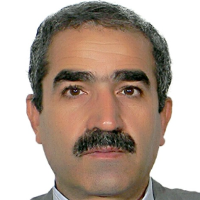Biological characteristics of canola stem-borer weevils, Ceutorhynchus spp. (Col.: Curculionidae) in oilseed rape fields of some regions of Iran
Different species of weevils (Col.: Curculionidae) are found in oilseed rape fields, which some of those are canola stem-borer weevils. They feed inside petioles, crown and/or stems of the crop in larval stages and cause damage. These weevils are mainly belonging to genus Ceutorhynchus, which little information about their taxonomy, distribution and biology is available in Iran.
During 2016-2018, the biological characteristics of canola stem-borer weevils were investigated in canola fields of Mazandaran, Lorestan and Golestan provinces. In each province, three fields were selected for collecting samples. Yellow water traps were used for weekly collecting adult weevils from the fields during crop growing season. For collecting weevil-infested crops and determining infestation rate, 10 quadrates (0.5 × 0.5 m) were used per field. The adult weevils collected by the traps were identified and the pest biology as well as the infestation rates of the crop by the weevils were studied.
In this study, five Ceutorhynchid species were collected and identified: C. picitarsis and C. chalybaeus from Mazandaran, C. erysimi and C. pallidactylus from Golestan and C. sulcicollis from Lorestan, Mazandaran and Golestan. In late November, the adult weevils migrated to canola fields and after feeding and mating, the females deposited their eggs into main veins, petioles of the lower leaves or inside of the collar area of young canola plants and the emerged larvae penetrated into the host plant. The three larval instars of this pest fed inside host plant tissue during autumn and winter till mid spring season. The feeding activity of the first and second instar larvae were observed in late November and late December, respectively. Third instar larvae were found from beginning until mid-spring season. In late April, third instar larvae left the host plant, dropped in the soil for pupation and new generation adults emerged in May. These weevils are univoltine. The results showed that, the maximum infestation rates of oilseed rape by the stem weevils in Mazandaran, Lorestan and Golestan provinces was 20.1±0.89, 14.8±1.29 and 10.2±0.29 percent, respectively.
Determining the time of adult migration activity, oviposiotion and larval development of the weevils is an integral part of pest management strategy in oilseed rape fields. In this study, flight and oviposition activity of adults and also feeding activity of the first instar larvae were mainly observed in late November, which suggests this time as a suitable time for chemical control, if necessary. These weevils are mostly distributed around the Caspian Sea region (Mazandaran and Golestan provinces) however more investigations are required to conclude the existence of those in other parts of country.
Biology , Distribution , canola , weevil
- حق عضویت دریافتی صرف حمایت از نشریات عضو و نگهداری، تکمیل و توسعه مگیران میشود.
- پرداخت حق اشتراک و دانلود مقالات اجازه بازنشر آن در سایر رسانههای چاپی و دیجیتال را به کاربر نمیدهد.


